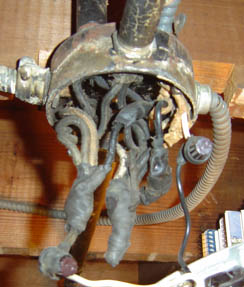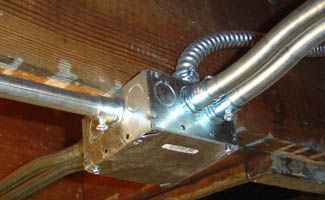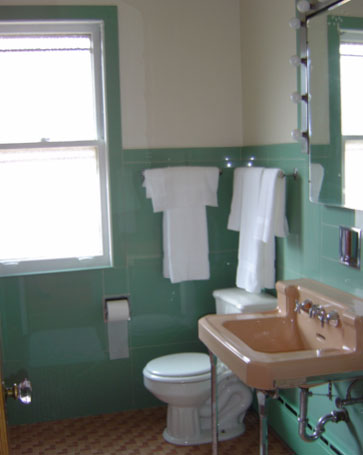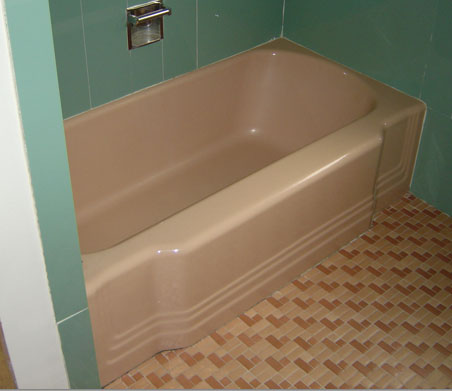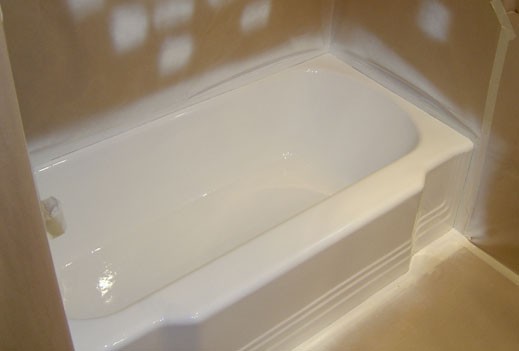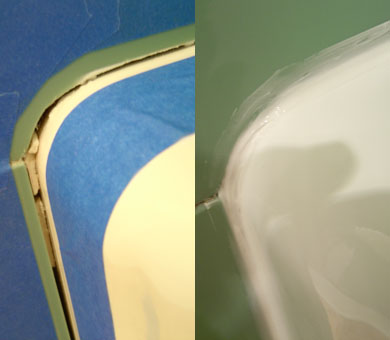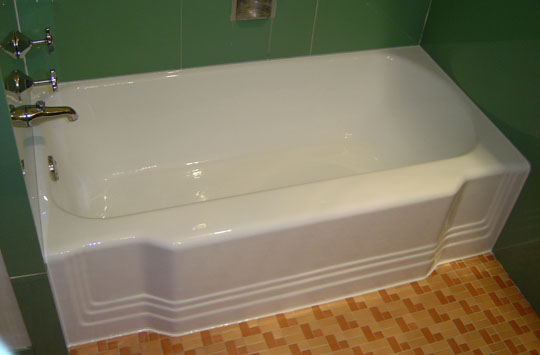It Hides a Multitude of Sins
Tuesday, October 25th, 2005The previous owners of The Old Man put in what I call a “Seller’s Kitchen”: a kitchen whose purpose is primarily to help sell the house. Our kitchen looks nice, but isn’t terribly suited for cooking. In particular, however, once you fill it up full of stuff, it looks rather cluttered since every one of the upper cabinets has a glass door (this picture is from early 2005):
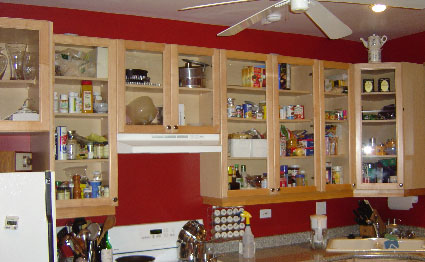
We spent some time investigating ways of opaqueing the doors: Chemical etching was too messy and too hard to get a consistent look. We couldn’t find pieces of nice handmade paper that were 42″ long. After racking our brains for a while, we basically forgot about it and went about our business.
At some point early in 2005, M. discovered Gila film and decided to try coating the window in her bathroom with the “white” (opaque) film–this would allow her to get more light but still have privacy. It worked OK in the bathroom, but because the old window glass wasn’t perfectly smooth, the film shows numerous small (but slightly annoying) imperfections. We shelved the rest of the film and forgot about it until last week.
I brought the remaining film up and coated the two cabinet doors above the refrigerator as a sort of a test run, and since the glass in the kitchen cabinets is new (and consequently, perfectly smooth), it looked fantastic! I ran by my home away from home to pick up another roll, and in a few short days, I managed to opaque every cabinet door except the four doors on the cabinets (not shown) that hold our dishes and glassware (which don’t look particularly cluttered).
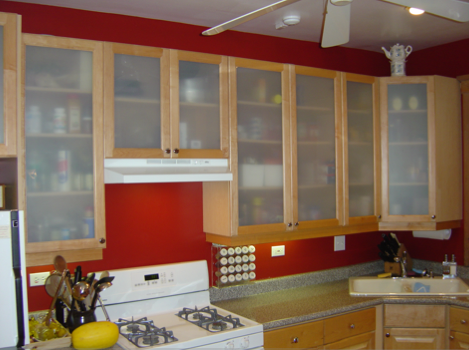
I have to confess that I shelled out the eight bucks for the “kit” to apply the film, which consists of a spray bottle of soapy water, a couple of cheap hard plastic “squeegees”, and a small razor cutter. The process for applying the film is pretty simple, but takes a little bit of practice.
First, a couple of don’ts: Don’t use Windex or anything containing ammonia to clean the glass–according to the instructions, ammonia dissolved the glue on the film. Also, while you can lay the glass flat to measure and apply and trim the film, stand it up before squeegeeing so that the excess soapy water can drain off the glass.
Start by cleaning the glass with the soapy solution. Scrape off any paint spatters or whatnot with a razor blade. You basically want your glass to be as smooth and clean as possible.
Now measure the glass and cut a piece of film about 2 or 3 inches wider and longer than your piece of glass. I strongly recommend that you don’t try to cut it too close here or you may wind up starting over like I did. Twice.
Separate the film from its backing by applying two pieces of tape over one corner and then quickly pulling them apart. Remove the backing, spraying the film as you go to counteract the static electricity which will make the film not want to cooperate at all.
Thoroughly spray the back side of the film and the glass itself, then position the film on the glass.
Now spray the other side of the film and squeegee the air bubbles out, starting in the center and going left, then right, stopping about two inches from the edge of the glass. Now trim the excess film off.
Spray the film again with the soapy water and give it a thorough squeegeeing. Now dab the glass dry around the edges and you’re done!
I managed to get 10 cabinet doors done in about four hours and we’re thrilled with our kitchen’s new look.







